Are you utilizing volume-based indicators effectively in your trading strategy?
Discover the seven best practices that can enhance your decision-making process and potentially boost your trading success.
Understanding these practices could be the key to unlocking the full potential of volume indicators in your trading endeavors.
Importance of Volume in Trading
Highlighting the significance of volume in trading, it serves as a key metric for assessing market interest and liquidity. Volume indicates the level of participation in the market, offering insights into the strength of price movements. When volume accompanies price changes, it validates the significance of the move, making it more reliable.
Technical indicators like the Money Flow Index (MFI) and the Chaikin Money Flow indicator rely heavily on volume data to generate accurate signals for traders. Volume indicators play a crucial role in confirming trends and identifying potential reversals, aiding traders in making informed decisions.
Understanding volume dynamics is essential for devising effective trading strategies and maximizing profit potential in the market.
Choosing the Right Volume Indicator
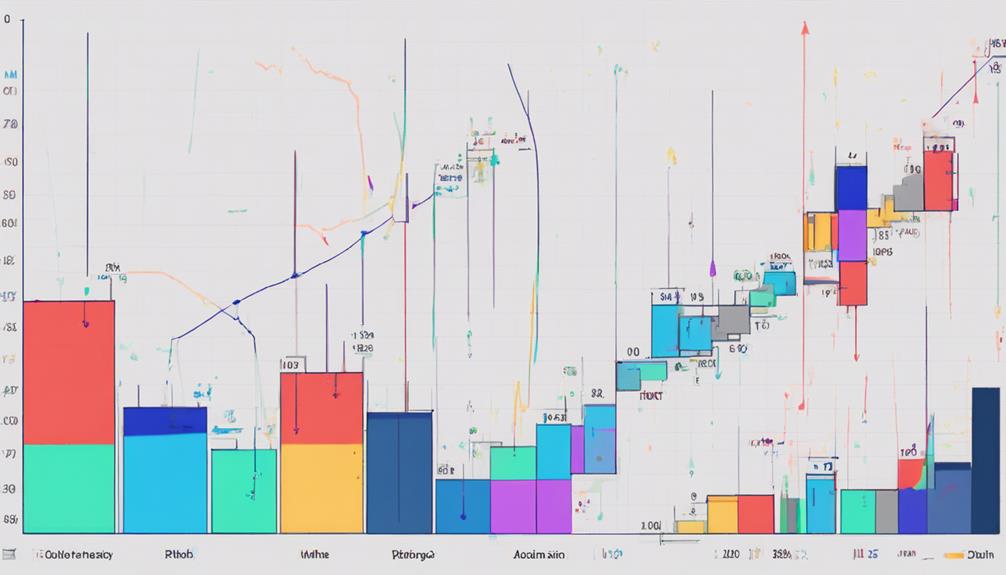
To effectively select the most suitable volume indicator for your trading strategy, analyze the key features and functionalities of each indicator in relation to your specific requirements and goals.
Consider using the On-Balance Volume (OBV) to predict price changes based on volume accumulation and distribution.
The Chaikin Money Flow (CMF) can help identify buying or selling pressure by measuring money flow over time.
For short-term trend analysis, the Klinger Oscillator focuses on force volume, considering actual volume and trend direction.
Raindrop Charts integrate volume into price movements, showing volume distribution throughout the day for better analysis.
Choose the right volume indicator based on your trading strategy and the insights you want to gain from volume trends.
Understanding Volume Patterns
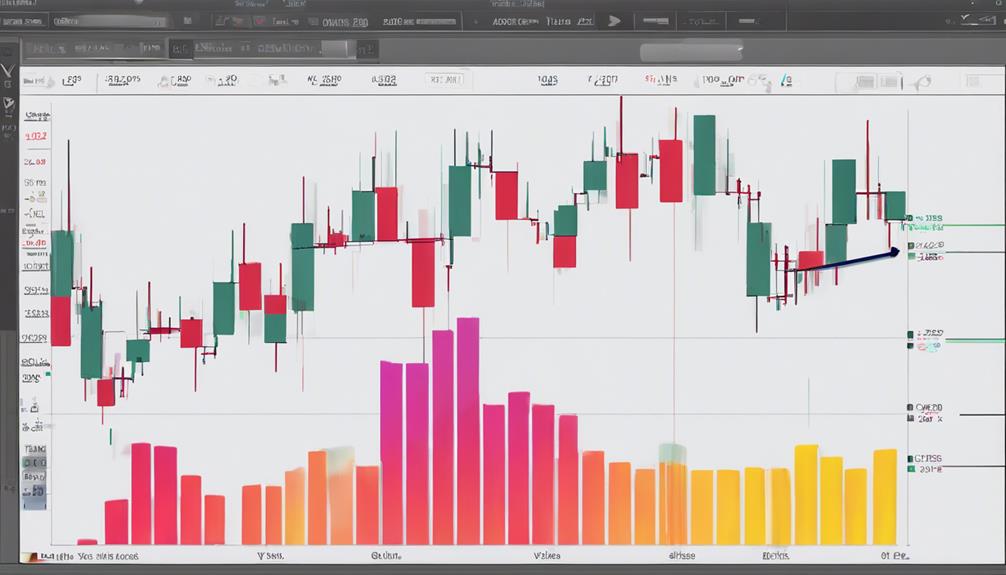
Understanding volume patterns is crucial for gaining insights into market dynamics and making informed trading decisions. Volume patterns, as technical indicators, reflect changes in trading activity, offering valuable clues about market sentiment and investor interest.
By analyzing these patterns, traders can identify trends or potential reversals in the market, aiding in the prediction of price movements with greater accuracy. Recognizing how volume patterns interact with price movements enhances the understanding of market behavior, enabling more informed trading decisions.
Whether observing increasing volume accompanying price uptrends or divergences signaling potential reversals, interpreting volume patterns is essential for traders seeking to navigate the complexities of the market landscape effectively. By incorporating these insights into your trading strategy, you can better position yourself to capitalize on emerging opportunities.
Interpreting Volume Trends
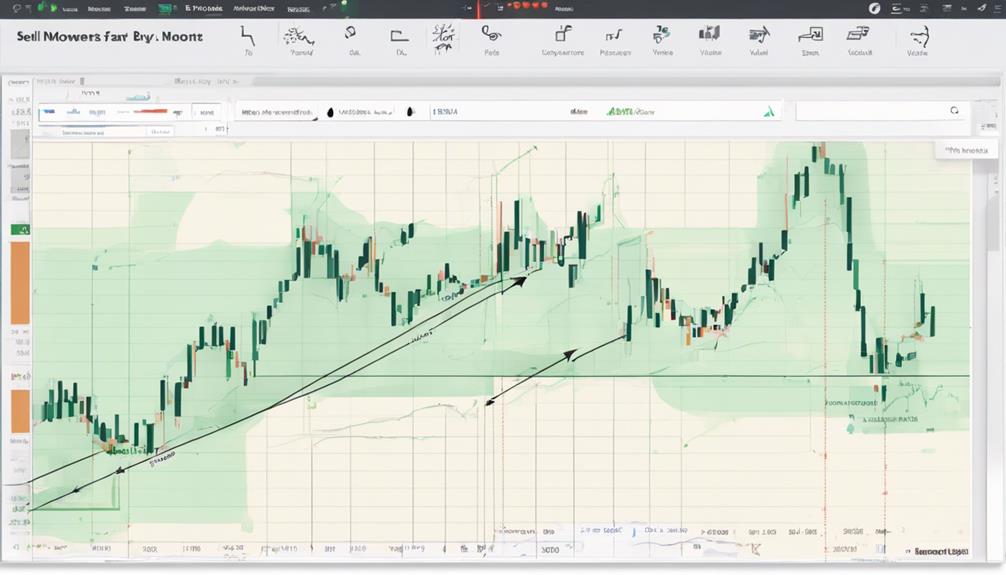
When interpreting volume trends, it's crucial to identify patterns that indicate market sentiment and potential price movements.
By understanding the relationship between volume and price, you can gauge the strength of trends and potential reversals.
Keep an eye out for volume divergences that may signal shifts in market dynamics.
Identifying Volume Patterns
Analyzing volume spikes, surges, and drops in price movements is crucial for identifying volume patterns that signal shifts in market sentiment. Volume patterns, like accumulation or distribution phases, provide insights into market dynamics. Understanding these patterns confirms price movements and aids in predicting potential reversals.
For instance, increasing volume accompanying a price rise suggests strong buying interest, while falling volume during a price drop may indicate weakening market momentum. Recognizing these volume patterns equips you to make informed trading decisions based on changing market activity levels.
Understanding Market Sentiment
By observing volume trends, you can effectively gauge market sentiment and identify shifts in stock interest and conviction levels. Analyzing volume patterns can help you understand the level of buying and selling pressure in the market.
Here's how volume trends impact market sentiment:
- High Volume: Indicates strong interest and conviction in a stock.
- Trend Strength: Volume patterns offer insights into market sentiment, helping identify trends and potential reversals.
- Potential Breakout Opportunities: Analyzing volume trends can confirm the strength of a trend or signal potential breakout opportunities.
Volume-based indicators like On Balance Volume (OBV) and Money Flow Index can assist you in assessing market sentiment for making informed trading decisions.
Analyzing Volume Divergence
Volume divergence signals shifts in market sentiment by highlighting inconsistencies between volume trends and price movements. Analyzing volume in relation to price can offer insights into potential reversals or continuation patterns.
When volume diverges from price, such as high volume paired with a price decrease or low volume with a price increase, traders may identify trading opportunities. Volume discrepancies can act as an early warning sign for trend changes, aiding in making informed trading decisions.
Integrating volume analysis with other technical indicators enhances risk management strategies. Understanding volume divergence is crucial for traders looking to interpret market sentiment accurately and capitalize on potential trend changes for effective trading strategies.
Using Volume for Confirmation Signals

When analyzing volume for confirmation signals, focus on signal strength analysis to gauge the power behind price movements. Timing confirmation signals accurately can improve your trading decisions by validating trends.
Consider the relevance of volume trends in conjunction with price action to enhance the effectiveness of your trading strategies.
Signal Strength Analysis
Analyzing volume alongside price movements provides traders with valuable insights into market sentiment and helps confirm the strength of signals. When assessing signal strength through volume-based indicators like On-Balance Volume (OBV), consider the following:
- High Volume with Price Breakout: High volume accompanying a price breakout indicates a higher probability of trend continuation.
- Low Volume During Trend: Low volume during a trend may suggest weakening momentum, signaling a possible trend reversal.
- Market Sentiment Analysis: Analyzing volume alongside price action provides a comprehensive view of market sentiment, aiding in making well-informed trading decisions.
Timing Confirmation Signals
Considering market dynamics, utilizing volume indicators for timing confirmation signals can significantly enhance the accuracy of your trading decisions. Volume-based indicators such as On-Balance Volume (OBV) help validate entry and exit points by analyzing volume trends.
These confirmation signals align trading strategies with market interest and liquidity, adding a crucial layer of validation to your decision-making process. By incorporating volume analysis into your trading approach, you can improve trading accuracy and reduce the risk of false signals.
This enhanced level of validation based on volume activity can make your trading decisions more robust and aligned with market dynamics, ultimately leading to more informed and precise trading outcomes.
Volume Trend Relevance
To enhance the accuracy of your trading decisions, understanding the relevance of volume trends is crucial when using volume for confirmation signals.
Importance of Volume Trend Relevance:
- Rising volume alongside price increases validates bullish momentum in the market.
- Falling volume during price declines can confirm bearish trends or potential reversals.
- Volume confirmation signals help traders make informed decisions based on market activity.
Avoiding Common Volume Indicator Mistakes
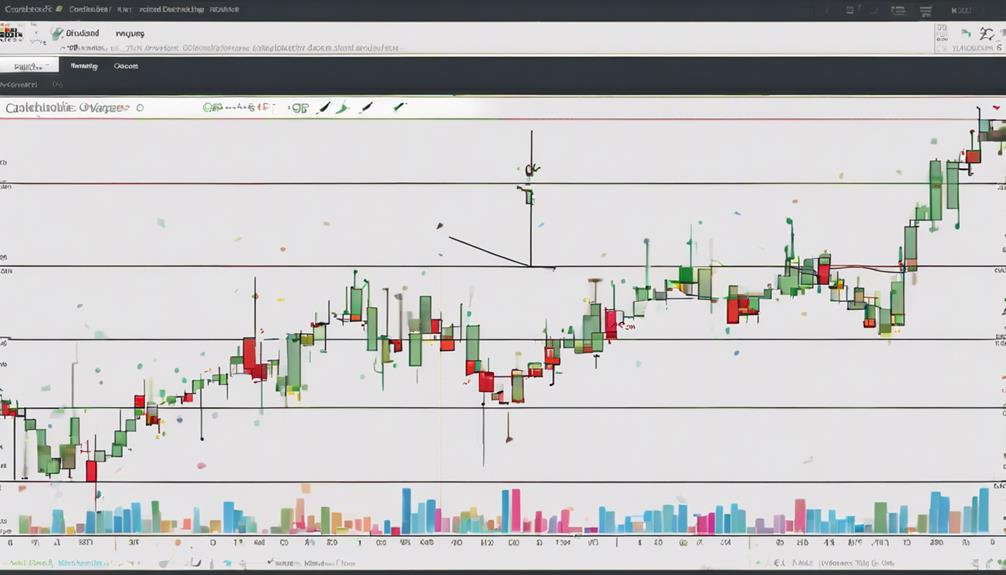
When using volume indicators, it's crucial to avoid common mistakes that can significantly impact your trading decisions and outcomes. One common mistake is solely relying on volume indicators without considering other technical factors. Misinterpreting volume spikes as buy or sell signals can lead to poor trading decisions.
Overlooking the trend direction when analyzing volume indicators can result in inaccurate conclusions. Failing to adjust volume indicators for different timeframes may lead to incorrect interpretations of market activity. Ignoring the limitations of volume indicators, such as lagging signals or false breakouts, can hinder trading success.
Incorporating Volume Analysis in Strategies
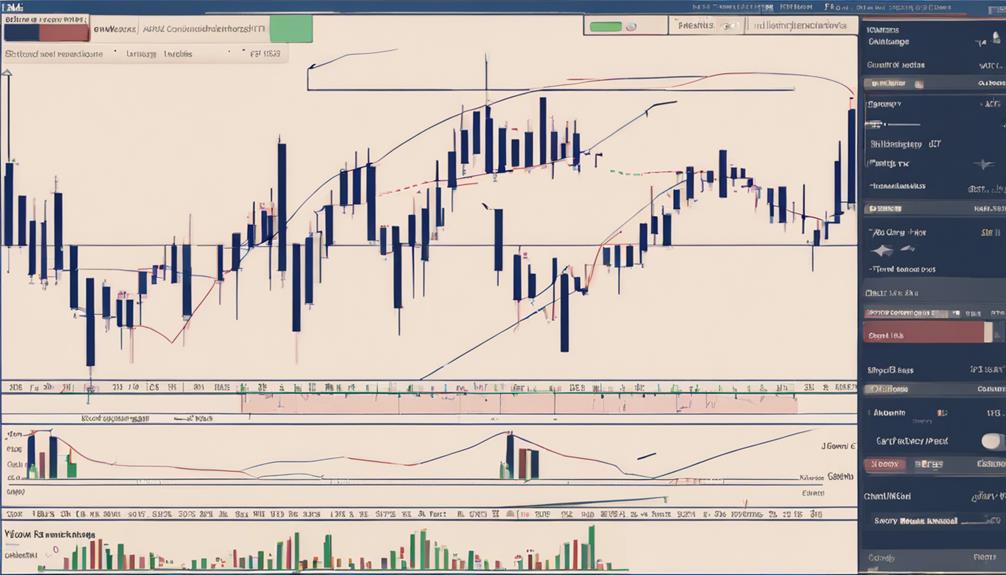
By integrating volume analysis into your trading strategies, you gain valuable insights into market interest and liquidity levels, confirming price movements and enhancing decision-making processes. Utilizing volume-based indicators can significantly improve your trading outcomes by:
- Spotting Trend Strength: Volume patterns help identify the intensity of a trend, providing clues on whether it's likely to continue or reverse.
- Identifying Potential Reversals: Sudden spikes or drops in trading volume can signal potential market reversals, aiding in timely decision-making.
- Enhancing Risk Management: Understanding trading activity through volume analysis enables better risk management strategies, allowing you to protect your capital effectively while maximizing profit potential.
What are the Best Practices for Using Volume-Based Indicators?
When using volume indicators explained, it’s important to look for confirmation from other technical indicators. Pay attention to the relationship between price and volume for a more accurate analysis. Use volume-based indicators in conjunction with other tools to gain a comprehensive understanding of market trends and potentials.
Frequently Asked Questions
How Do You Use a Volume Indicator Effectively?
To use a volume indicator effectively, focus on interpreting market interest and buying/selling pressure. Confirm price movements and identify trend reversals. Utilize tools like VWAP for intraday insights. Spot overbought/oversold conditions with MFI. Enhance decision-making and trading success.
What Is the Best Technical Indicator for Volume?
The best technical indicator for volume is the On-Balance Volume (OBV). It predicts price changes based on volume accumulation or distribution, offering insights into market sentiment. Traders widely use OBV alongside price movements for decision-making.
How Do You Use a Volume Ratio Indicator?
To use a volume ratio indicator effectively, monitor trading volume against its average. Identify unusual spikes or drops, indicating potential price shifts. Understand market interest and assess price movement significance. Customize indicators for your strategy and timeframe.
How Do You Use a Volume Profile Indicator?
To use a volume profile indicator effectively, identify key price levels with significant trading activity. Analyze volume distribution for support and resistance areas. Assess market acceptance of price levels. Enhance trade planning by focusing on high trading interest levels.
Conclusion
In conclusion, mastering volume-based indicators is like adding fuel to your trading engine. By understanding the significance of volume, choosing the right indicators, and interpreting volume trends accurately, you can navigate the market with precision.
Incorporating volume analysis in your strategies is like unlocking a hidden treasure chest of trading opportunities. Avoid common mistakes, follow best practices, and watch your trading success soar to new heights.
Volume is your secret weapon in the world of trading.


